Tea culture in our collections

Tea holds a uniquely respected position in English culture, despite the fact that it has never been widely grown within our borders. The story of how this came to be is a fascinating tale of global exploration, colonial exploitation, and the evolution of English society. We can explore this story not only through The MERL collections, but also the archives of the University’s Typography department, which holds a wealth of documents relating to early tea advertising.
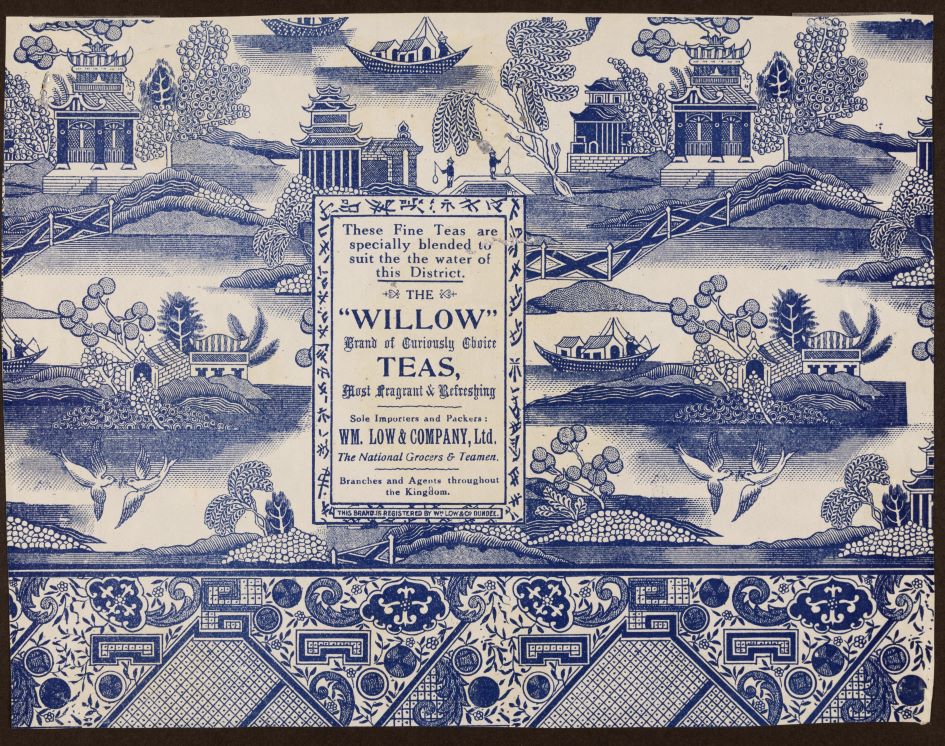
Origins in China
Drinking tea is so embedded into Chinese cultural history that nobody knows who truly invented it. It is said that emperor Shén Nóng – whose existence is shrouded in myth – created tea when leaves accidentally fell into his boiling water in 2737BC. The written history of tea began during the Tang dynasty (618 – 906 AD), when it became recognised as a national drink. The first text dedicated entirely to tea was written by Lu Yu in the eighth century, which was around the time that the tea trade began to pick up – though initially, this was only to China’s immediate neighbours.
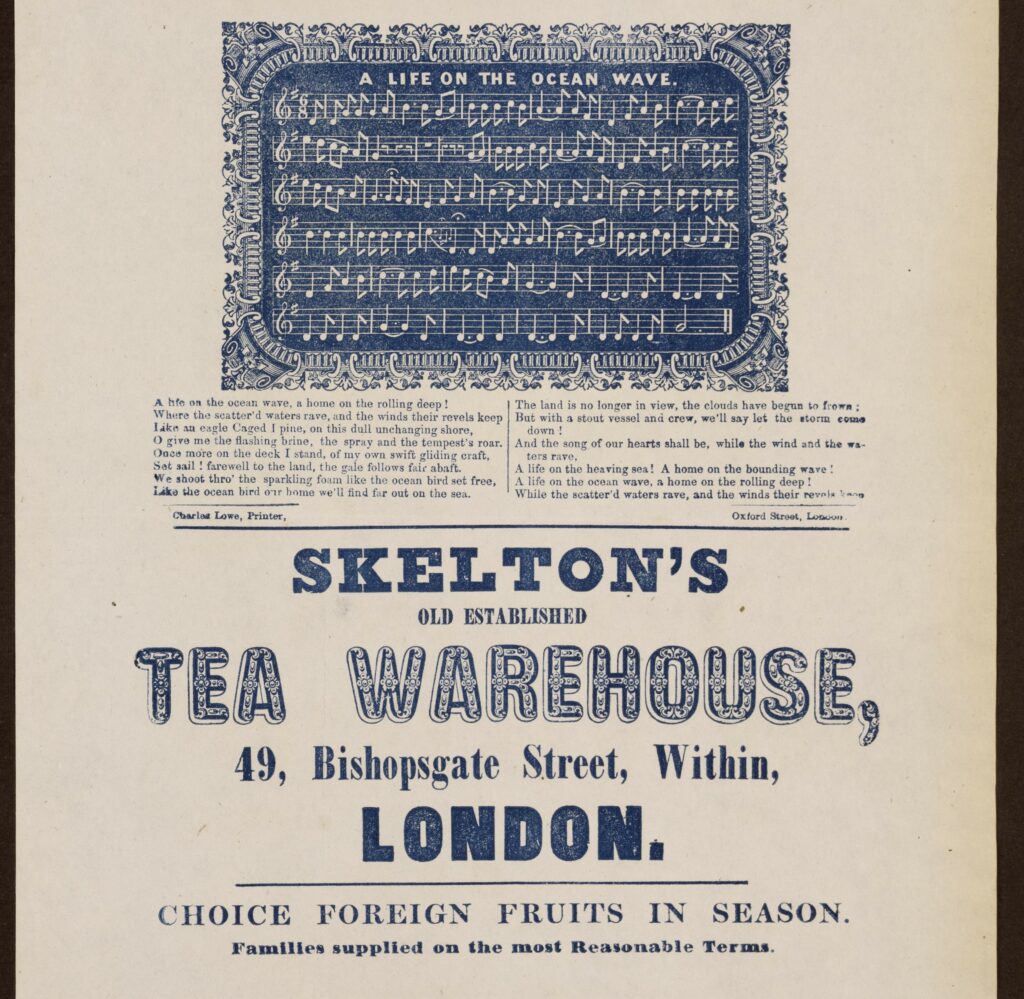
Catherine and the Clippers
It was the Dutch, not the British, who first imported Chinese tea to Europe. Catherine of Braganza, the Portuguese wife of Charles II, is credited with introducing tea into British society, as her habit of drinking it in court rapidly spread amongst the upper classes. Much of the early tea trade was dominated by ‘clippers’, which were speedy ships that raced from China to get the best prices for their cargo. The Cutty Sark was one of the last clippers ever built, as steamships then took over.
Skelton’s Tea Warehouse advertised their tea with sea shanties, romanticising the clipper crews as bold pioneers.
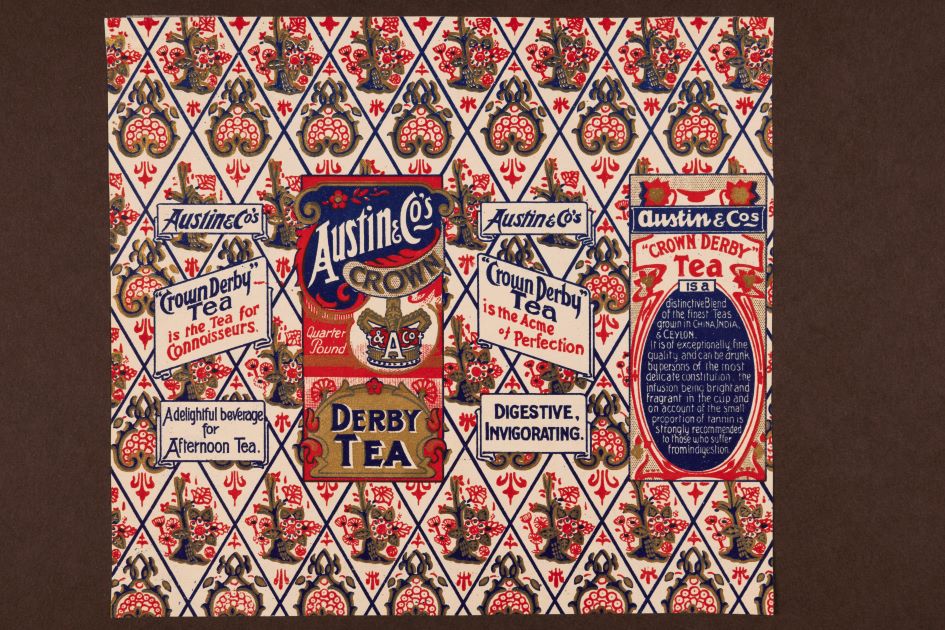
The Healthy Choice
The popularity of tea was not just down to its social status, but also the advertising of its health benefits. The first ever advert for a commodity in a London newspaper was for tea, and it put these advantages front and centre. In Mercurius Politicus in September 1658, the advert wrote: “That Excellent, and by all Physicians Approved, China Drink, called the Chineans Tcha, by other nations Tay alias Tee”. It was thought to treat colds, headaches, scurvy, fevers and giddiness, amongst other ailments.
One company, Austin & Co., marketed their tea as a cure for indigestion.
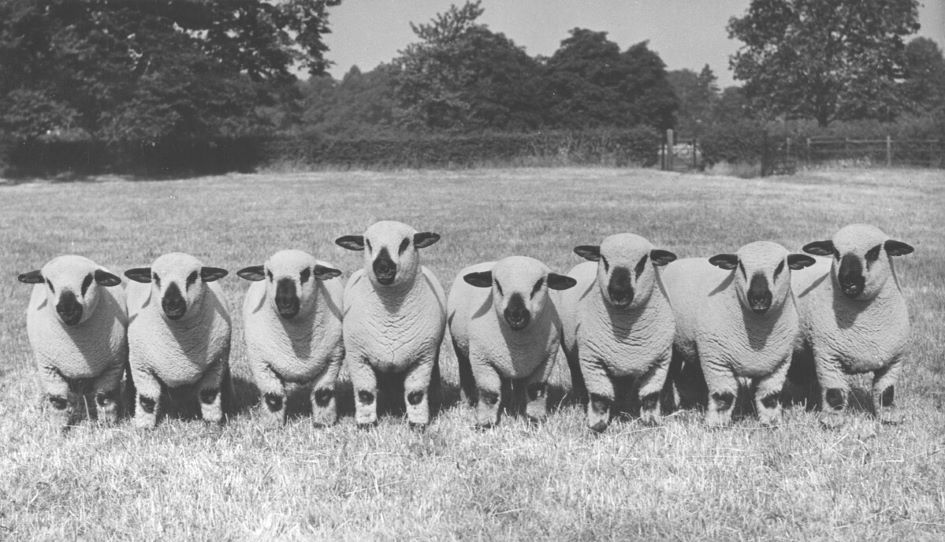
Tea for the masses
Good quality tea first became affordable to the wider population in 1784, when the government’s tea tax was massively reduced. This was in response to widespread tea smuggling, which sought to service people desperate to ride the social bandwagon of tea. As it was not quality controlled, other substances were often added to make its appearance more authentic – accounts even exist of sheep dung being added to tea to make it a more realistic colour. Leaves of hawthorn and ash were also used instead of genuine tea leaves.
It’s unclear where exactly the sheep dung was sourced from. Perhaps these Hampshire Down rams?
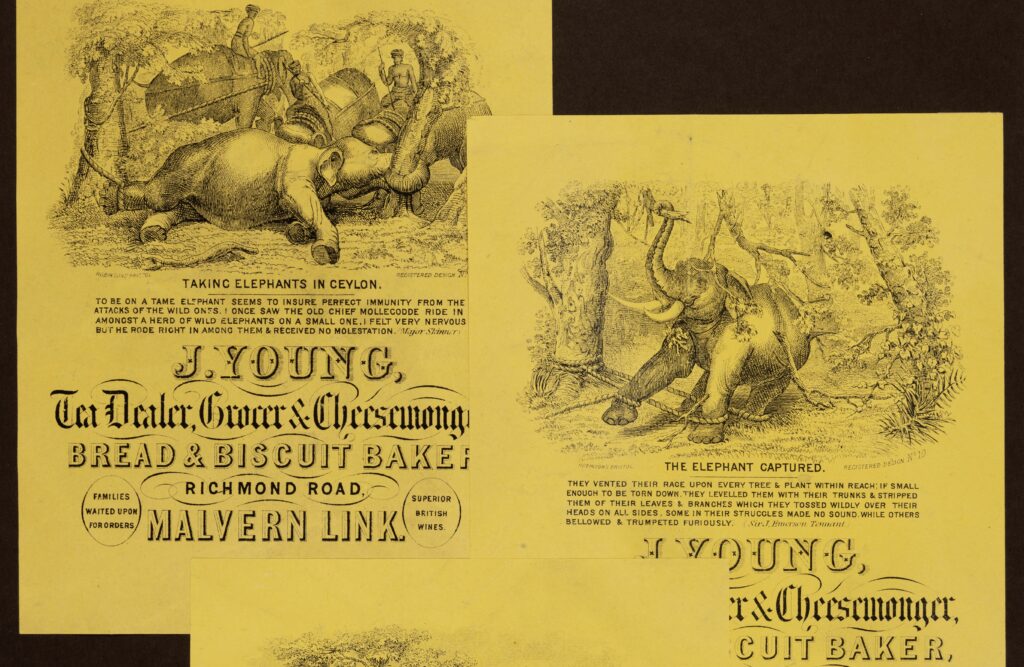
Exploitation in India
The East India Company’s monopoly on the tea trade with China ended in 1834, and as a result they decided to grow tea in the country with the most land available to them: India. Fortunately for them, Singhpo chiefs had recently shown wild Indian tea plants to Major Robert Bruce, and these grew much better than imported Chinese tea leaf. Widespread land clearance for tea plantations had a devastating impact on local ecosystems. By 1900, 900,000 acres of jungle had been cleared in India and Ceylon (Sri Lanka). This drastically reduced wildlife populations, particularly tigers. Elephants also suffered, as they were used to transport large loads of tea.
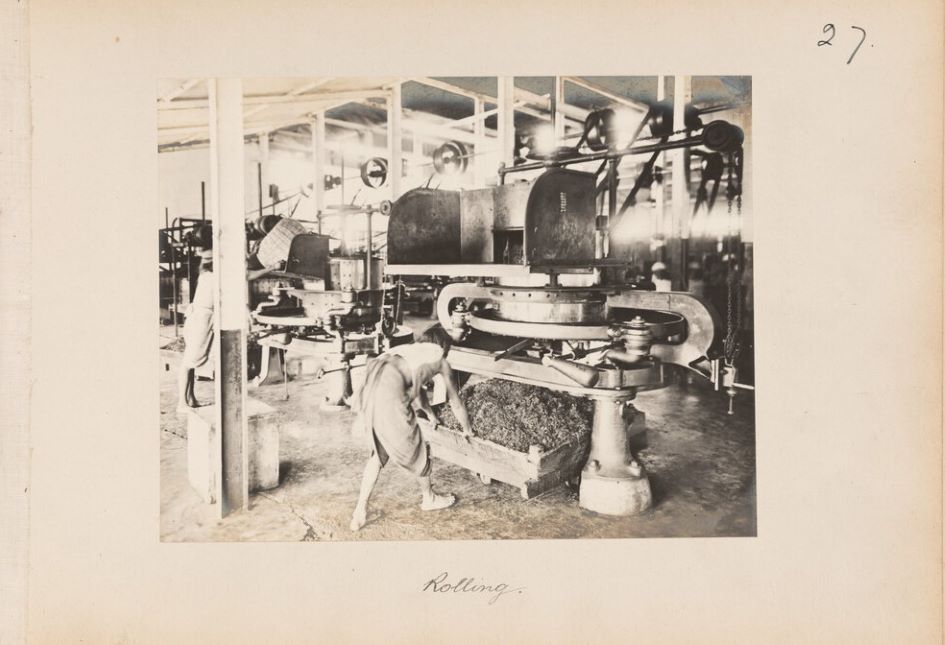
Tea technology
In the 1870s, manufacture of tea was an exceptionally slow process. Tea pickers would harvest the leaves by hand, and these were then rolled into balls and left to ferment under wet cloth. The fermented leaf was fired in a brick choola, and the dried tea was then divided up into grades. The intense and perpetual heat of the ovens often left the workers unwell.
The agricultural manufacturer Marshalls, whose archives we hold, aimed to speed up the process. Their tea rollers and dryers were so successful that they became one of largest producers of tea processing machinery in the world.
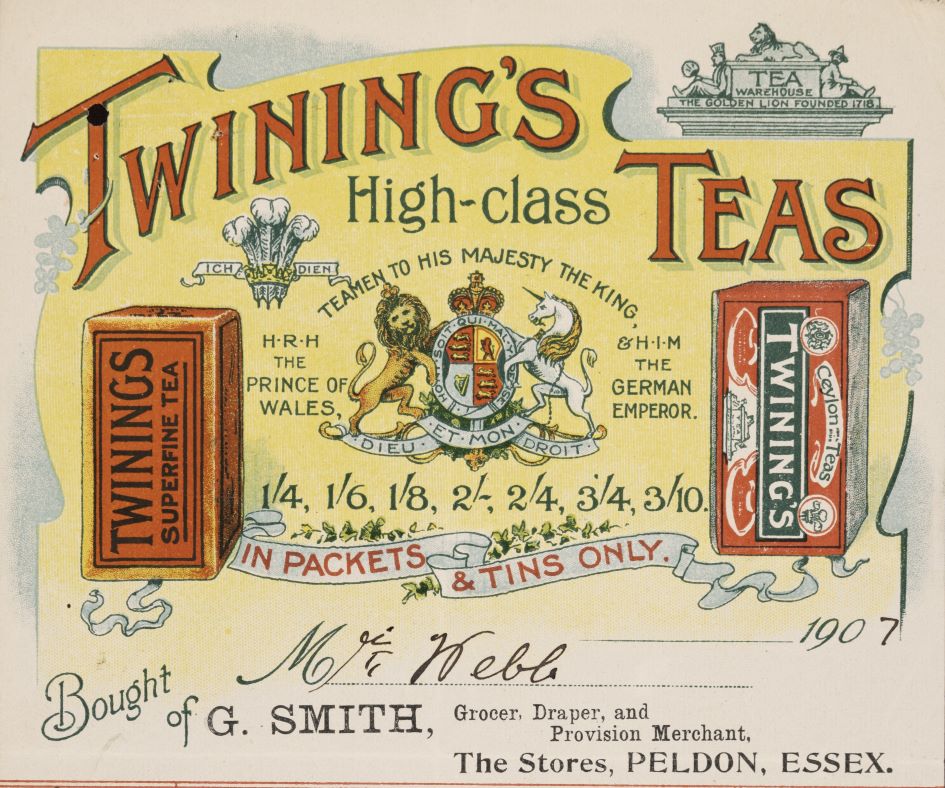
Bringing people together
The social element of tea drinking in British society was facilitated by the teahouses of the 18th century, such as Ranelagh Gardens in Chelsea. They were more popular than coffee houses, which were waning in popularity by this time, as they served the needs of both men and women whereas socialising over coffee was seen as a strictly masculine pastime. By the time that many of them had closed by 1850, the social tradition of the ‘cuppa’ was firmly embedded. Teashops then took over the social scene, usually as addendums to bread and milk shops.
The founder of Twinings Tea, Thomas Twining, founded the first known tea room in the UK in 1706.
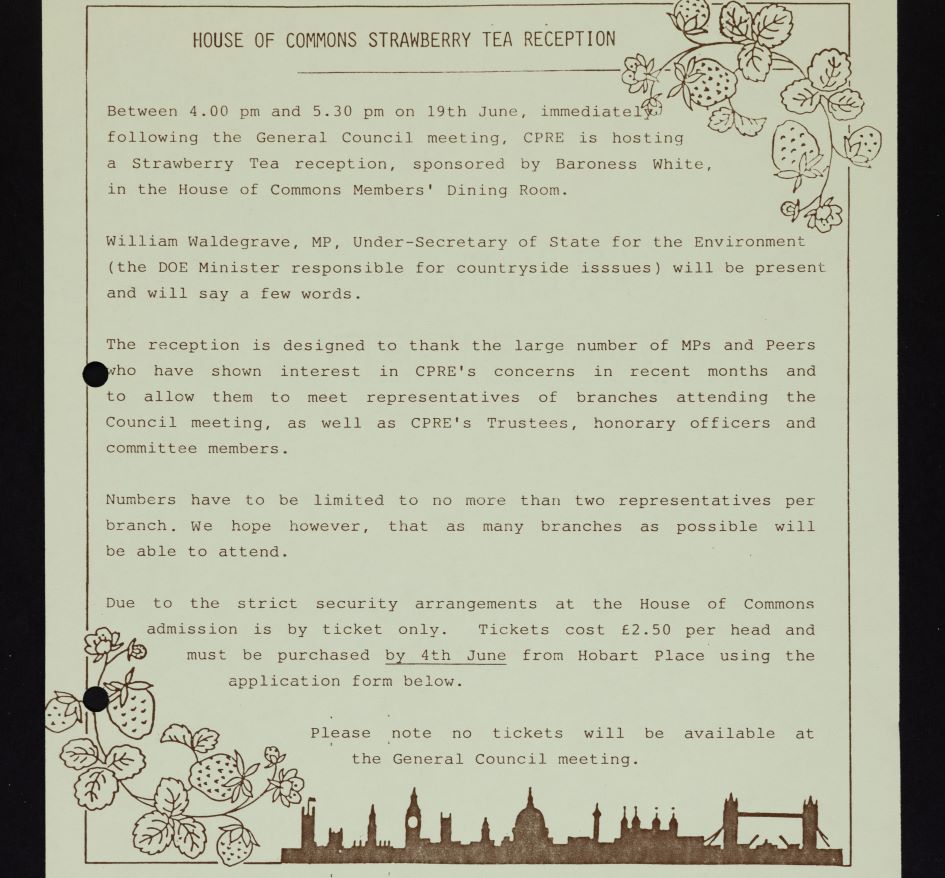
The Strawberry Tea Reception
Tea soon became more than just a drink in English society, and was synonymous with gatherings and celebrations both urban and rural. When the Council for the Preservation of Rural England wanted to thank its members and supporters in Parliament in 1984, they chose a tea reception. The invite list gives a good idea of who was considered a friend of the CPRE at the time; for example, Jeremy Corbyn was invited. The menu consisted of tea, a scone, a sandwich, a French pastry and strawberries & cream.
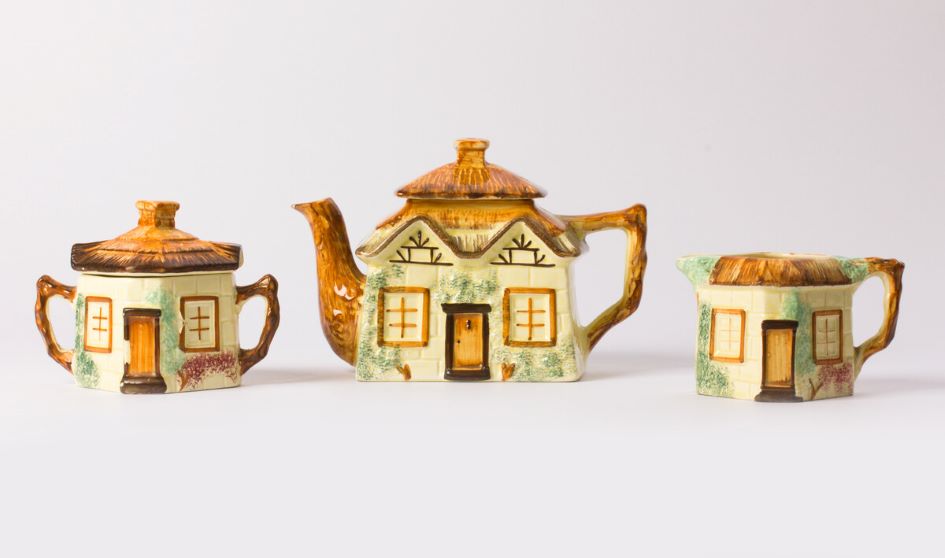
The History of Afternoon Tea
The introduction of a formal afternoon tea is generally credited to Anna, Duchess of Bedford, in 1840. However, the ever-changing mealtimes of the upper class were gradually shaping tea into its own distinct event for decades beforehand. The size of teapots in different times is a key indicator of this. Between 1740 and 1790, the size of the average teapot increased considerably, suggesting that gatherings were becoming more formalised. These early versions of afternoon tea had strict customs – some accounts state that you were expected to turn your teacup upside down once you had finished.
These cottageware teapots indicate that teatime was just as important to rural culture as it was to urban high society.
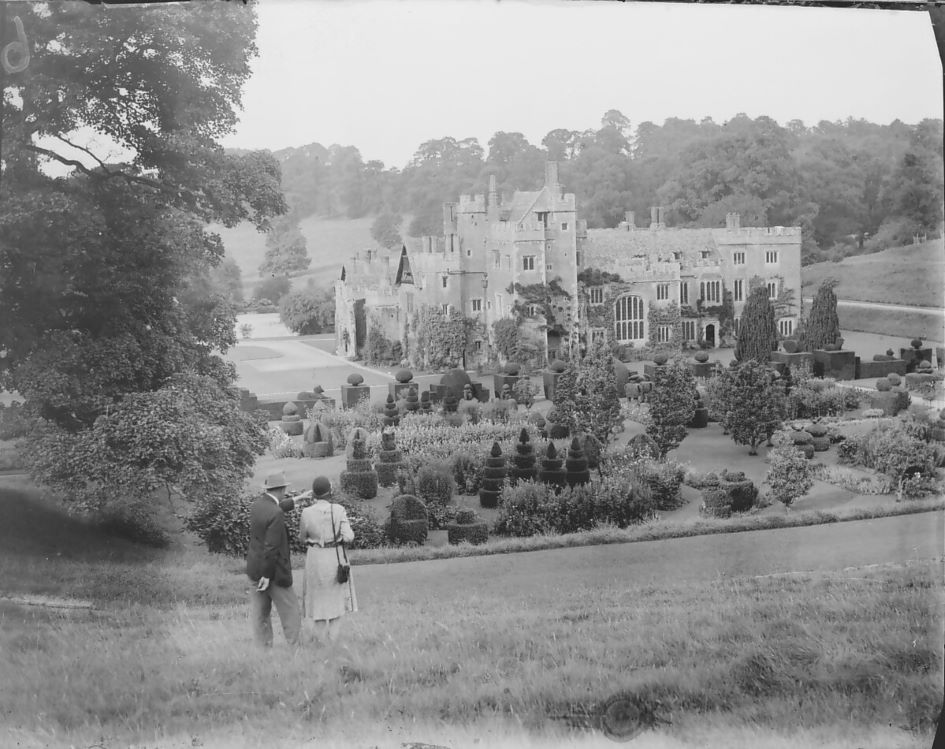
The cultural importance of the tea break
Why is it tea that we drink during our work breaks? The habit likely derived from the household servants of upper class employers, who took such a liking to the tea they served that many of them had a tea allowance calculated into their wages by the mid eighteenth century. This then spread to other professions, who likely would have drank black tea with brown sugar. Following enclosure and the loss of common land for ordinary people, few could afford to keep their own cow and fresh milk was prohibitively expensive. Drinking tea with milk was considered the pursuit of the rich.
Compton Wynyates, pictured here, is an example of a country home influential in the development of the tea break.
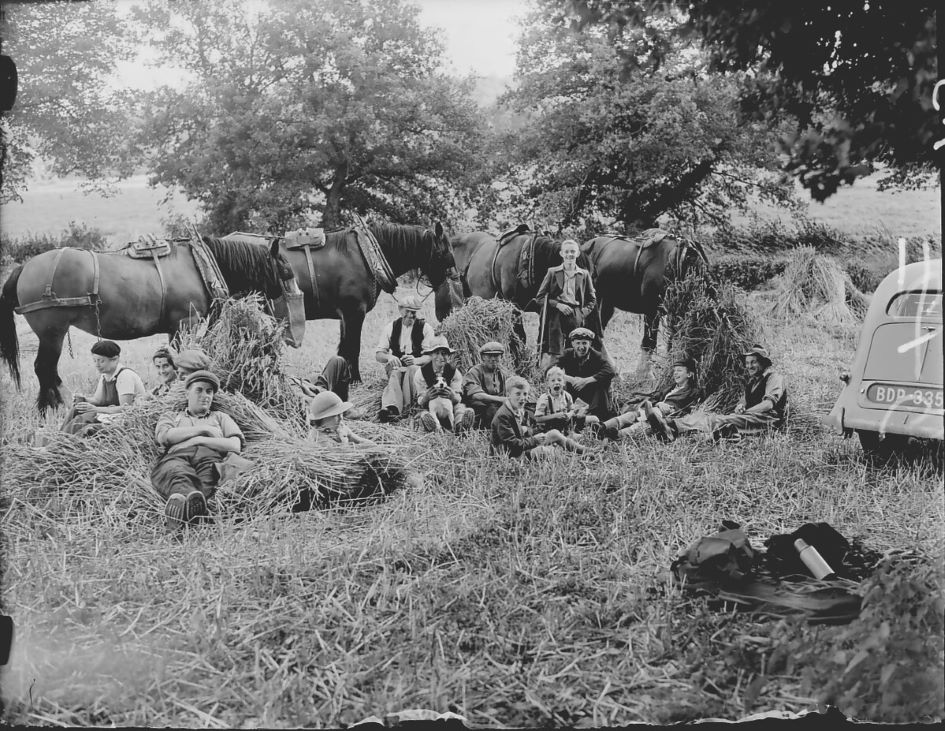
Drinking tea in the fields
Agricultural labourers need constant hydration, and around the turn of the 19th century, tea began to replace ale as the refreshment of choice. We can only assume that workplace efficiency improved as a result!
Not everyone was impressed that a status symbol of the upper classes had become so widely consumed. For example, philanthropist Jonas Hanway wrote of his outrage at seeing road builders, hay makers and cart drivers drinking tea.
This photograph shows harvesters breaking for tea near Knighton, Wiltshire. The link between tea and relaxation is clearly on display here!
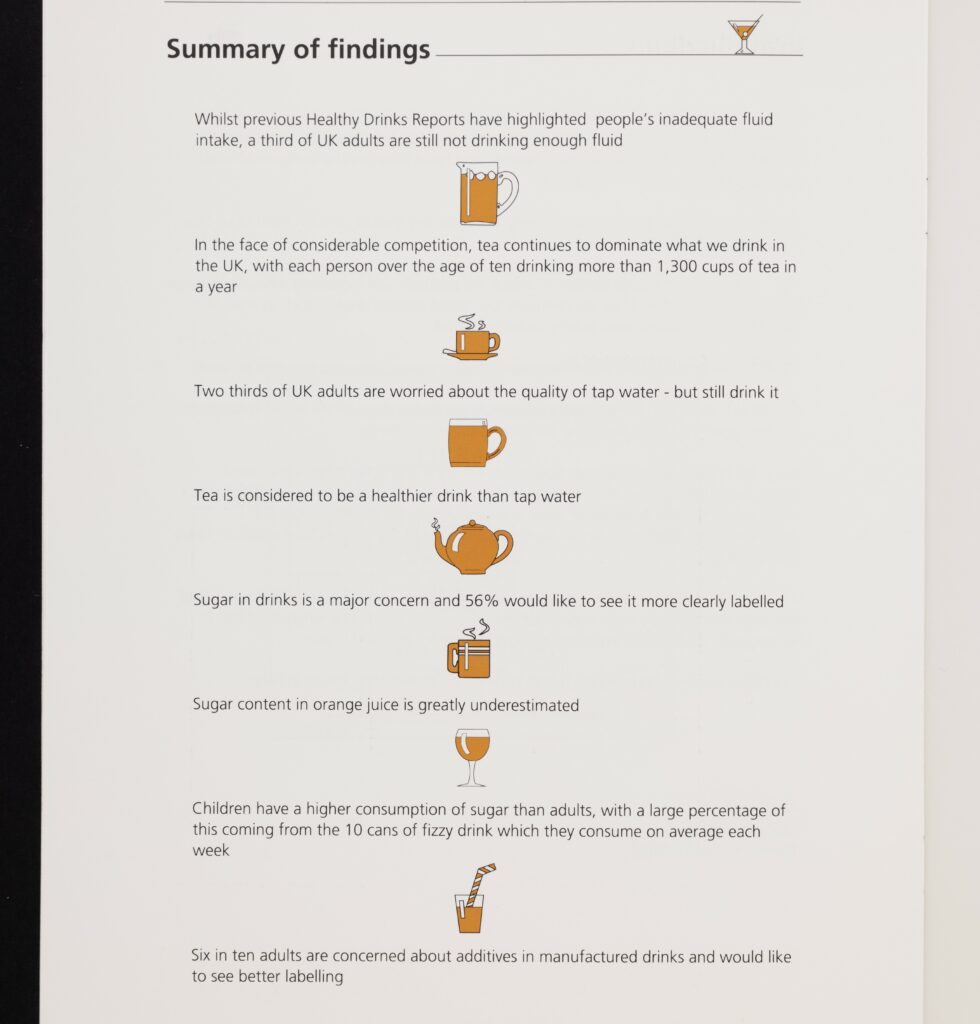
The Tea Council
The health benefits of tea were not just marketed in the 17th century; they continue to be advertised to this day. The Tea Council, established in 1966, aimed to promote tea as a healthy choice. Each year, the Council produced a study on the drinking habits of the nation, in an attempt to promote the health benefits of tea. This particular report, published in 1992, found that 81% of British people drank tea, and that nearly 60% of people viewed fruit juice as healthy, whereas only 15% thought the same about tea. At the same time, around 90% of respondents underestimated the amount of sugar in the average glass of fruit juice.
Now the UK Tea and Infusions Association, it also champions ethically sourced tea.

Tea growing in England
Traditionally, tea has not been grown by English farmers as the climate has not been warm enough for commercial viability. The Tregothnan Estate has in Cornwall has grown ornamental camellia, a close relative of the tea plant, for two centuries, and in 1999 decided to plant the first ever British tea bushes. Although only 28 grams were harvested in the first year, the tea gardens have gradually become more productive, due to the Estate’s ‘micro-climate’ of relative warmth compared to the rest of the UK.
As this photograph shows, the mist of the Cornish coastline also contributes to ideal tea growing conditions.
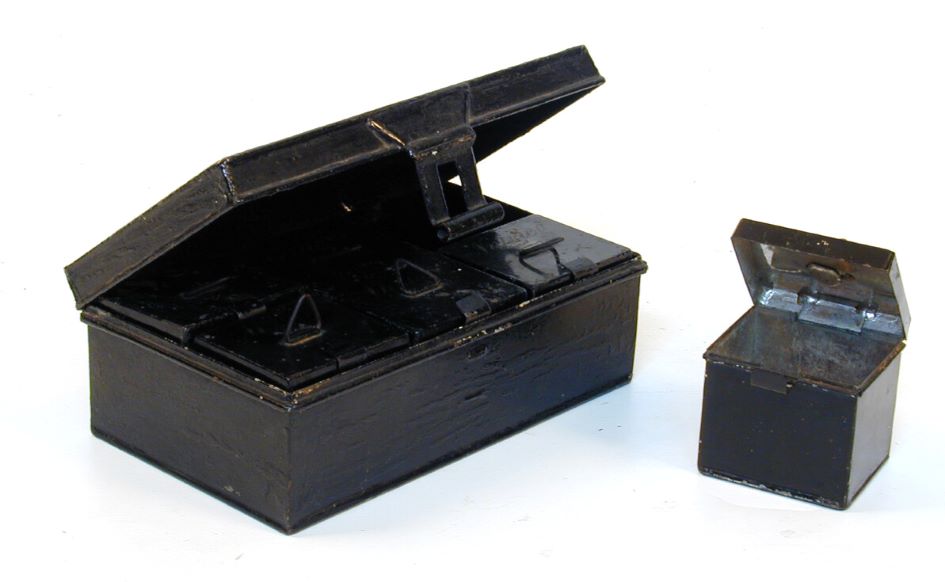
Chai, then and now
Although “chai” is the Hindi word for “tea”, there are key differences in the preparation of the two beverages. In a historical sense, the key difference is that tea is of Chinese origin, but chai was invented in India. In terms of flavour and composition, chai features spices such as cardamom, cinnamon and ginger, whereas tea is a simpler concoction that involves steeping tea leaves in water. In fact, early chai recipes did not involve tea leaves at all.
The preparation and drinking of chai is now an important daily ritual in many English households. An individual’s preparation of chai can have any number of cultural influences, such as African chai with rose petals, and American “dirty chai” with espresso.
A spice box, like this 19th century example, is an essential piece of equipment for anyone who wants to impress guests with their chai.
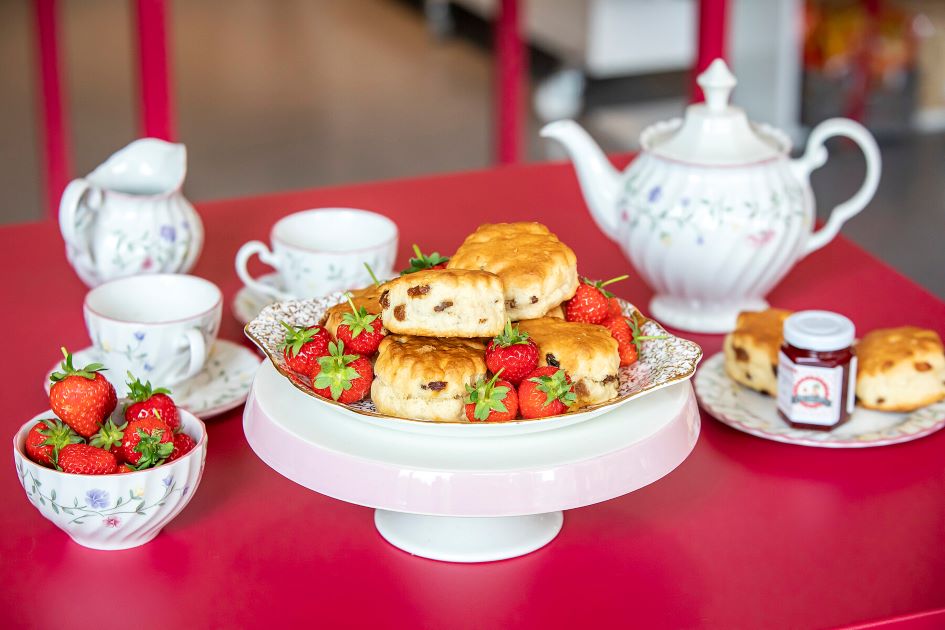
Acknowledgements
Many thanks to Geeta Ludhra, one of our partners on the Further Afield project, whose advocacy for tea inspired us to create this exhibition. Geeta will be exploring how tea – specifically, chai – can bring people together over the course of the project.
Thanks as well to the Typography department for providing access to their archives for this exhibition. All Typography images (those with TYP in the image reference) are credited to:
Centre for Ephemera Studies
Lettering, Printing and Graphic Design Collections
Department of Typography & Graphic Communication